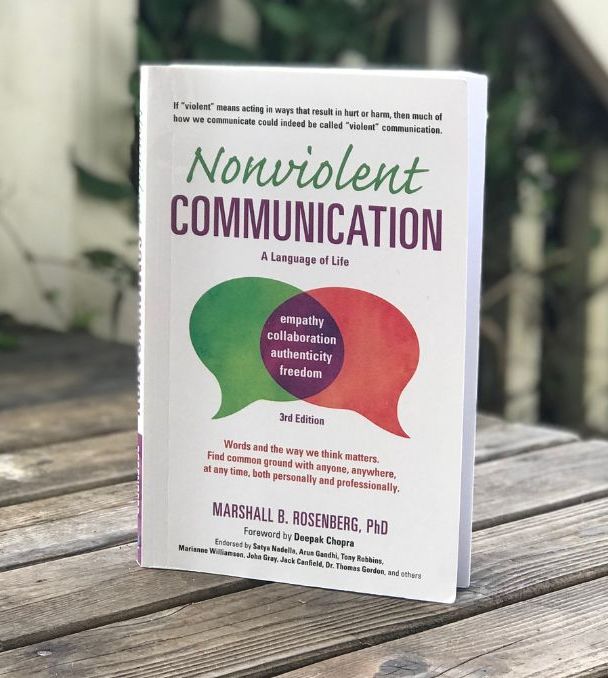
Based on Marshall Rosenberg’s groundbreaking work, here are the most important NVC principles you can start using today to transform your relationships and communication:
- Use the Four-Step NVC Process
When you’re upset or need something, follow this sequence:
Observation: “When I see/hear…” (facts only, no interpretation)
Feeling: “I feel…” (actual emotions, not thoughts)
Need: “Because I need…” (your underlying need)
Request: “Would you be willing to…” (specific, doable action)
Example: Instead of “You never listen to me,” try “When I was sharing my work stress and you continued looking at your phone, I felt hurt because I need connection and attention.
Would you be willing to put your phone aside when we talk?”
- Replace “You Make Me Feel” Language
Take ownership of your emotions. Others can trigger feelings, but they don’t cause them.
Replace: “You make me angry” with: “I feel angry when you interrupt me because I need respect for my voice” - Observe Without Evaluating
State facts without mixing in your interpretations or judgments.
Evaluation: “She’s always late” (always = evaluation)
Observation: “She arrived 15 minutes after our agreed time three times this week.”
- Listen for Needs Behind Difficult Behavior
When someone is angry, critical, or demanding, ask yourself: “What need are they trying to meet?”
A complaining spouse might need appreciation. An angry boss might need security or control. A whining child might need attention or autonomy. - Express Feelings, Not Thoughts Disguised as Feelings
Learn the difference between genuine feelings and thoughts.
Not a feeling: “I feel like you don’t care” (this is a thought/interpretation)
Actual feeling: “I feel sad and disconnected” - Make Requests, Not Demands
The difference? How you respond when someone says no.
Request: If they decline, you empathize with their needs
Demand: If they decline, you criticize, guilt-trip, or punish
Frame requests positively: “Would you be willing to call me when you’ll be more than 30 minutes late?” instead of “Stop being so inconsiderate about time.” - Practice Emergency First-Aid Empathy
When someone is upset, resist the urge to fix, advise, or defend. Instead, reflect back what you hear:
“It sounds like you’re feeling frustrated because you need support with this project. Is that right?”
Stay with their feelings until you sense their tension release or they stop talking. - Transform Anger Using the Four Options
When you hear something difficult, you have four choices:
Blame yourself
Blame others
Connect with your own feelings and needs
Connect with their feelings and needs
Choose options 3 and 4 for better outcomes. - Practice Self-Compassion Through NVC
Stop “shoulding” yourself. When you make a mistake:
Instead of: “I’m so stupid for doing that”
Try: “I feel disappointed because I value competence. Next time I need to slow down and double-check my work.” - Give Appreciation Using NVC Structure
Make your appreciation specific and need-focused:
“When you took time to explain that concept again, I felt grateful because I really need understanding to learn well. Your patience helped me grasp something I was struggling with.”
The Bottom Line
NVC isn’t about being nice or avoiding conflict. It’s about communicating in a way that honors everyone’s humanity and creates genuine connection. Start with just one of these practices and notice how it changes your interactions.
Remember: The goal isn’t to get people to do what you want. The goal is to create relationships based on mutual respect and understanding, where everyone’s needs matter.
Your challenge: Pick one of these 10 points and practice it for the next week. Notice what happens to the quality of your conversations and relationships.